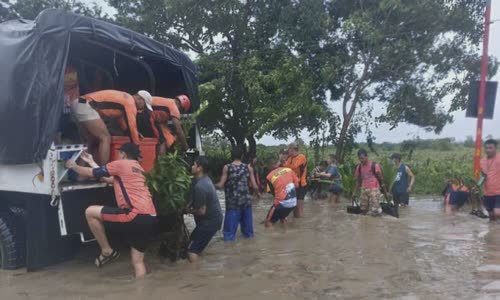Moon tropical storms landed in the North of the Philippines, injuring at least two people and schools and offices to close.
Moon storm landed into the town of Maconacon in Isabela province, north of the Philippines this morning with a wind of 110 km/h, jerking over 150 km/h.

Photo: AP
This is a modal window.
Beginning of dialog window.
End of dialog window.
Although the storm mainly attacks the northern area of Luzon Island, President Ferdinand Marcos Jr.
Heavy rains can potentially have many risks to the public, Trixie Cruz-Anteles, a press secretary of the Philippine President's Office.
The decision to close the school was made a day after millions of first and secondary students in the Philippines returned to school for the first time after two years of interrupting because of Covid-19.
Filipino officials said that two civilians were hospitalized because trees poured in Moon storm in Cagayan province.
Philippine rescue forces helped people evacuate in Tuguegarao, Cagayan province on August 23.
Some provinces are expected to suffer heavy influences of the storm, when the consequences of the earthquake have not yet been overcome strongly last month.
The Vietnam National Hydrometeorological Forecast Center said that Moon's storm was about 810 km northeast of the Paracel Islands at 7am tomorrow morning, the strongest wind of level 10, and a two level increase.
The Philippines faces about 20 storms each year and is located in the Pacific Fire Ring, volcanic arc and broken lines in the Pacific Ocean, making the country one of the most disaster -suffering places so much.
Bulusan volcano erupted for the second time in a week, creating large amounts of ash and hindering many activities in Sorsogon province of the Philippines.
Megi, the first storm this year, landed in the eastern area of the Philippines, caused landslides and floods, causing at least 25 deaths.



 Alfredia Hopkins
Alfredia Hopkins







